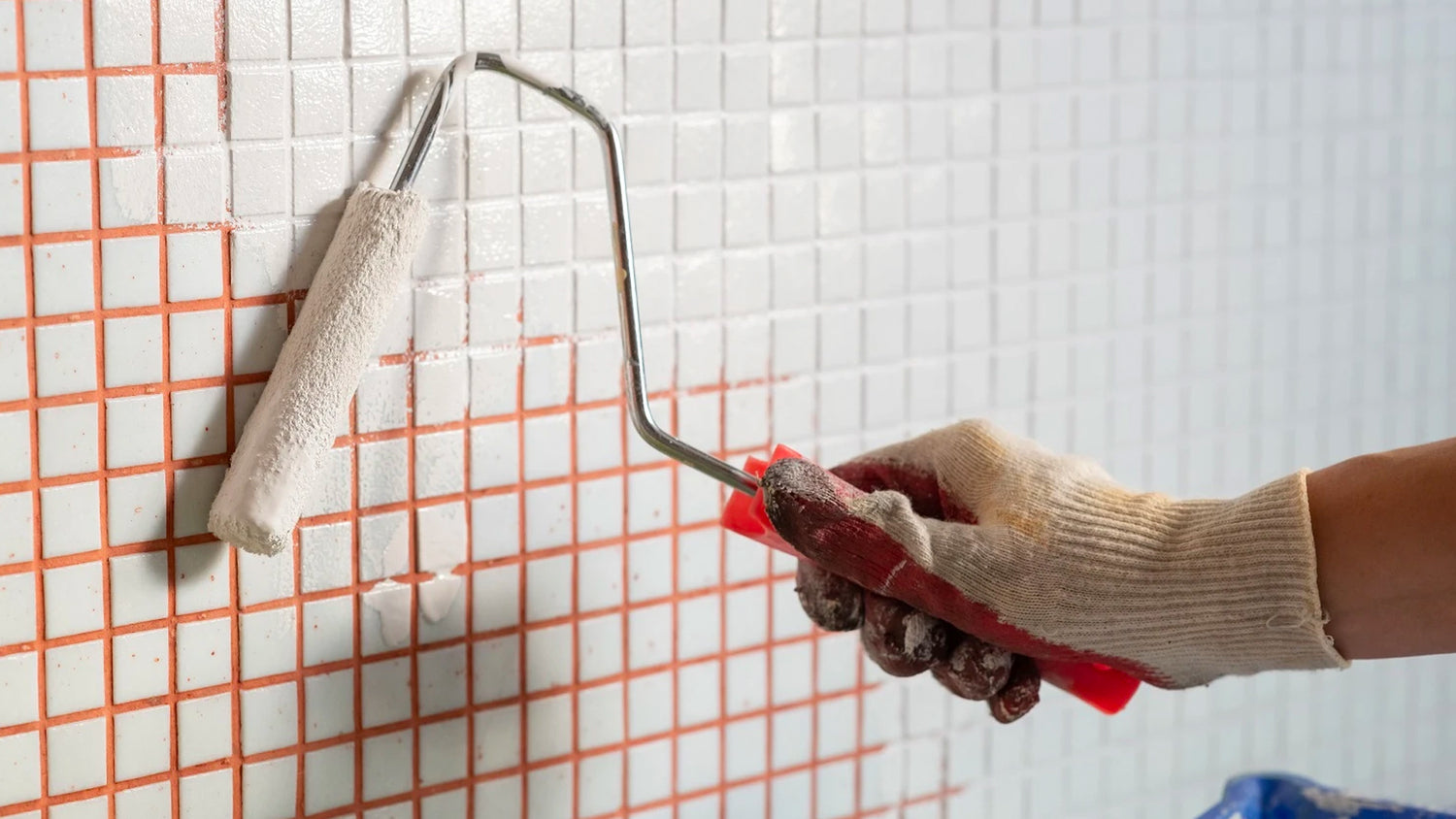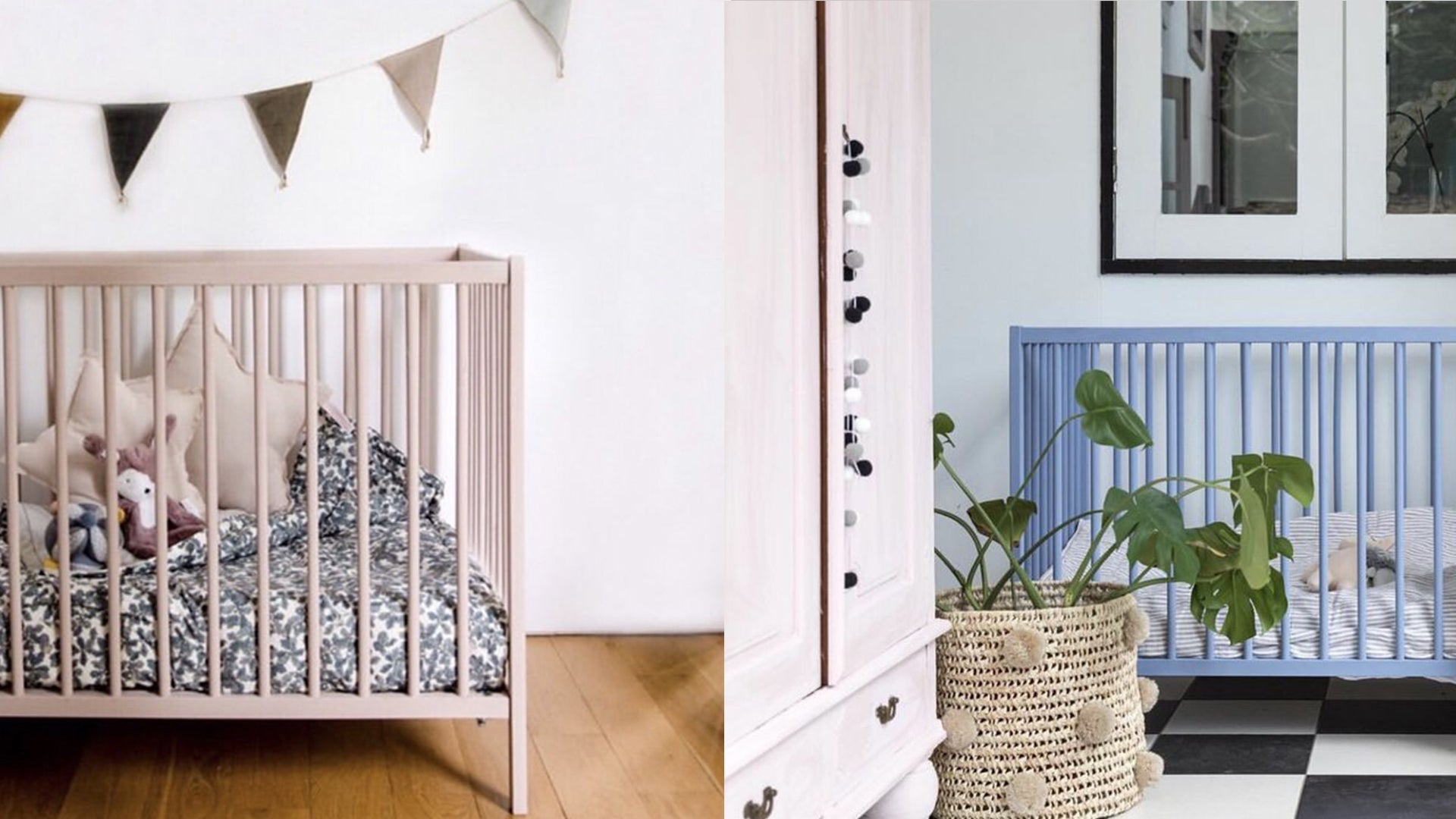Key FAQ Points:
- Ceramic wall tiles are usually fine for painting except in very wet areas
- Painted ceramic floor tiles will require maintenance due to wear and tear
- Painting ceramic floor tiles can be problematic - read this this guide completely before starting
- Use our Chalk Wall Paint collection for an ultra-matte finish. However, for areas that may be subjected to water-splash, the Al Fresco range is recommended.
- Before painting, scrub tiles with sugar soap and sand them by hand
---
Tiles are a popular feature in homes up and down the UK – not to mention those further afield. They provide a durable, water-resistant surface for bathrooms and kitchens as well as other spaces like porches.
But there comes a time when you want a change. In other areas of the home, a lick of paint can make a world of difference. But is the same true for tiles? Read on as we discuss whether you can paint tiles on your walls and floors, and the best approach for both areas.
The benefits of painting tiles
First and foremost, why would you want to paint tiles? For many, it comes down to the appearance. With tiles so long lasting and durable, lots of homes will have tiles that were installed several decades ago. It’s only natural that the look of these tiles has become dated over the years. It might be an old-fashioned colour or even an outdated pattern. Painting over tiles provides a fresh new look in your choice of colour.
On top of that, there’s the cost and convenience. If you fancy a change, removing tiles from the wall can be messy, time consuming and costly. That’s amplified if you want to replace them with new tiles, especially when it comes to the cost of your materials.
The alternative is to paint over the existing tiles with a suitable paint product. In doing so, you’ll effectively give your tiles a new lease of life without the need to undertake a disruptive removal – or pay for a new wall or floor covering to replace them.
Finally, it’s worth considering the benefits of painting over tiles compared to removing tiles completely. There’s a good reason tiles are a popular choice for demanding rooms like kitchens and bathrooms. They’re hard-wearing, water-resistant and impressively long-lasting. Painting over as opposed to removing your tiles means you’ll still benefit from those properties long into the future.
Can you paint tiles?
The answer is a resounding yes for most ceramic wall tiles. Floor tiles can be more of a challenge as there is greater pressure from wear than there is on walls. That’s why a belt and braces approach is a good idea. When deciding whether to paint them, it is wise to factor in the need for maintenance over time. Below we’ll discuss some of the factors to consider and steps you’ll need to take to achieve the best results when painting tiles.
Picking the right product
The most important thing to consider when painting tiles is the product you’re using. Regular paints do not tend to adhere well to the ceramic surface of your tile, resulting in a patchy, flaky covering that will look worse than even then oldest tiles.
While Frenchic Paint products are formulated with wood furniture in mind, they’re suitable for use on laminate, uPVC, composites, metal and – you guessed it – ceramic wall tiles. The best option is the Al Fresco range, which has been developed for both indoor and outdoor use. Our Al Fresco paints are durable, weatherproof and available in a wide range of colours so you can always find one that’s right for you. The finish is flat, but Frenchic Finishing Coat can be added as a top-coat for a sheen.
You can also use our Chalk Wall Paint collection for an ultra-matte finish.
Preparing the surface
Preparation is key for the best results when painting your tiles. Prior to starting the project, the surface should be in a good condition. That means clean, dry and free from contamination. We recommend the same preparation for most projects – a good scrub with sugar soap, rinse and allow to dry thoroughly, then follow with a hand-sand, sufficient to abrade the surface – even though this might seem tricky, it is a worthwhile step.
After cleaning and abrading your tiles, wipe away any dust and you are ready to paint. When painting your tiles, use light pressure and try not to overload your brush. We recommend referring to the instructions on your tin for the right rate of coverage and drying time between coats.
Aftercare for painted tiles
Once your tiles are painted, the paint will need to start curing (hardening). Treat the surface with care for up to three weeks, until it is fully cured. We would also advise you do not allow the painted area to become wet for at least a week. Going forward, clean with a mild detergent and avoid harsh chemicals.
If you have decided to paint your floor, it’s best not to walk on the area for four hours at least. For the next seven days, we recommend only walking on the surface with socks and to keep pet paws and claws at bay to avoid damaging the finish. In any case, due to the nature of wear on floors, you may find some maintenance is required.
A note on bathrooms
Bathrooms are one of the most popular rooms for tiles. A tiled wall or floor provides a water-resistant covering for the natural spills and splashes of a sink, bath or shower. However, very wet areas like showers, around baths or where standing water can occur are not recommended for painting.
Tile painting inspiration
If you’ve decided to paint your tiles, you can also use our Chalk Wall Paint collection for an ultra-matte finish. However, for areas that may be subjected to water-splash, the Al Fresco range is recommended.
Both collections offer a number of colours to choose from. But how you use these colours is entirely up to you.
One of the most popular options is simply to choose a single colour and paint over your tiles for a clean, consistent finish. Go for a modern, versatile grey or opt for something bold like blue or green. Freshen up with white or opt for dark drama with black!
If you’re feeling a bit more adventurous, you can even use stencils to add your own pattern with a second, contrasting colour. At Frenchic, we offer a selection of high-quality A4 stencils, including everything from heart and star patterns to quirky bee designs.
Alternatively, you can create a stunning look simply by using alternating tiles for a check design. Black and white provide the ultimate monochrome contrast for a classic Victorian style, but you can mix and match any colours to make the look your own.
Another point of interest is grouting. We are all accustomed to the appearance of grout lines in tiled areas. But when painting over tiles, the quickest, simplest way is to ignore grout lines and paint the whole area, as masking off to avoid the grout can be time consuming and laborious.
The finished, painted look means the grout lines are less defined and tend to blend in, meaning the look of the area is quite different – becoming more uniform and contemporary. Some people love this look, but if you prefer the traditional grouted appearance, there are grout pens are available which enable the redefinition of the grout lines.
Give your tiles a new lease of life
From bathrooms to kitchens, your tiles can be completely transformed with Frenchic’s range of durable, low-VOC paints. Take a look at our Al Fresco and Chalk Wall Paint collections to find the colour that’s right for you, or head to our Frenchic TV YouTube channel for more tips and how-to guides on transforming your home with paint.







